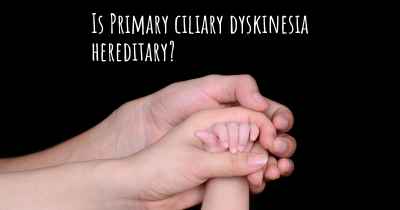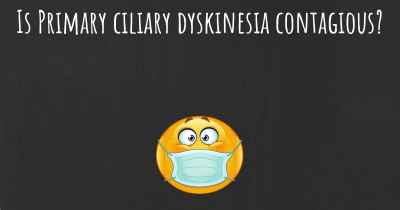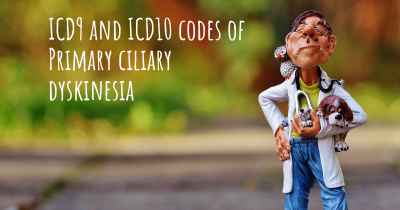What is the history of Primary ciliary dyskinesia?
When was Primary ciliary dyskinesia discovered? What is the story of this discovery? Was it coincidence or not?

Primary ciliary dyskinesia (PCD) is a rare genetic disorder that affects the structure and function of cilia, which are tiny hair-like structures found on the surface of cells throughout the body. These cilia play a crucial role in moving mucus, fluids, and other substances in various organs, including the respiratory tract, reproductive system, and the lining of the brain.
The history of PCD dates back to the early 20th century when it was first described by a Swedish physician, Dr. Kartagener, in 1933. He observed a triad of symptoms in patients, including chronic sinusitis, bronchiectasis (a condition where the airways in the lungs become damaged and widened), and situs inversus (a reversal of the normal positions of organs in the chest and abdomen).
Dr. Kartagener recognized that these symptoms were related and hypothesized that they were caused by a defect in the cilia. However, it wasn't until the 1970s that the link between PCD and ciliary dysfunction was firmly established. Researchers began to investigate the ultrastructure of cilia using electron microscopy and discovered abnormalities in the cilia of PCD patients.
Over the years, further research has shed light on the underlying genetic causes of PCD. It was found that PCD is primarily an autosomal recessive disorder, meaning that individuals must inherit two copies of the defective gene (one from each parent) to develop the condition. Several genes have been identified as being associated with PCD, including DNAH5, DNAI1, and CCDC39, among others. These genes encode proteins that are essential for the proper structure and function of cilia.
Advancements in genetic testing and molecular techniques have allowed for more accurate diagnosis of PCD. In addition to clinical symptoms and imaging studies, genetic testing can now be performed to identify specific gene mutations associated with PCD. This has greatly improved the accuracy of diagnosis and has enabled researchers to better understand the genetic basis of the disease.
PCD affects multiple organ systems, with the respiratory system being the most commonly affected. The impaired ciliary function in the airways leads to recurrent respiratory infections, chronic cough, and bronchiectasis. In the reproductive system, PCD can cause infertility in both males and females due to impaired ciliary function in the fallopian tubes and sperm flagella.
Another significant aspect of PCD is its association with situs inversus, a condition where the organs in the chest and abdomen are mirrored from their usual positions. This association led to the recognition of a broader group of disorders known as primary ciliary dyskinesia-situs inversus (PCD-SI) syndrome. Situs inversus occurs in approximately 50% of PCD cases, highlighting the importance of cilia in establishing proper organ positioning during embryonic development.
Despite the progress made in understanding PCD, there is currently no cure for the condition. Treatment mainly focuses on managing symptoms and preventing complications. This may involve regular airway clearance techniques, antibiotics to treat infections, and assisted reproductive technologies for individuals experiencing infertility.
In recent years, research into PCD has expanded, with a growing emphasis on developing targeted therapies. Scientists are investigating potential gene therapies, novel drug treatments, and interventions to improve ciliary function. These advancements offer hope for future treatments that may slow down or even reverse the progression of PCD.
In conclusion, the history of Primary ciliary dyskinesia dates back to the early 20th century when it was first described by Dr. Kartagener. Since then, significant progress has been made in understanding the genetic basis of the disease and its associated symptoms. While there is currently no cure for PCD, ongoing research holds promise for improved treatments and interventions in the future.
https://www.theguardian.com/science/blog/2016/sep/08/situs-inversus-and-my-through-the-looking-glass-body
Posted Oct 6, 2017 by Loredana 2350








